The Difference Between Intuition and Anxiety | Nalaverse
Intuition and anxiety are two concepts that are often confused but fundamentally different. Intuition is a “gut” feeling or inner knowing that arises spontaneously without any obvious cause. Anxiety, on the other hand, is a state of worry, apprehension, or fear that arises in response to perceived threats in our environment. While anxiety can be a natural stress response, it can become problematic when it's excessive or chronic and experienced over prolonged periods. On the other hand, intuition can be a powerful tool for decision-making, particularly when there is limited information or time for analysis.
Trusting Your Gut: The Benefits of Intuition
Intuition can be a valuable asset in business.
"Intuition is everything. It is the core of how I make decisions,” said Mellody Hobson, CEO of Ariel Investments.
Hobson attributes her success as a business leader to her ability to rely on her intuition when making decisions. By trusting her gut feelings, Hobson has identified investment opportunities that others may have overlooked, helping her company achieve significant success in the industry.
Navigating Workplace Dynamics: Anxiety and Intuition
Have you ever felt anxious or nervous around a coworker? Research has shown that anxiety can amplify our sensitivity to potential threats, including social threats such as rejection or criticism from others (Gilbert et al., 2018). And, these past experiences can leave a lasting impact on our nervous system and influence our reactions to similar situations in the future.
For example, suppose someone has experienced past trauma related to betrayal or abuse by someone in a position of authority. In that case, they may be more likely to feel anxious or mistrustful around a new coworker who reminds them of that person. This subconscious programming can cause them to misinterpret intuitive signals; perceiving the coworker as a threat, even if there is no objective evidence to support this.
Distinguishing Between Anxiety and Intuition
Learning to distinguish between anxiety and intuition can be challenging, but some strategies can help.
One approach is paying attention to each experience’s physical sensations; Anxiety often involves tension, nervousness, or restlessness, while a sense of calm or clarity may accompany intuition. Another approach is to reflect on the source of the feeling. Anxiety is typically triggered by a specific event or situation, while intuition may arise spontaneously and in response to a broader context.
Cultivating Awareness: Using Somatic Tools to Manage Anxiety and Cultivate Intuition
Diaphragmatic breathing and other somatic tools and sensory exercises can help manage anxiety and cultivate intuition. These practices regulate the body's nervous system, promoting relaxation, and increasing one’s awareness of bodily sensations. By learning to tune into the body's signals and regulate the stress response, individuals can improve their ability to distinguish between anxiety and intuition and use both as tools to maximize their decision-making skills.
Approaching Intuitive Signals with a Positive Perspective
It's important to welcome and listen to our intuitive signals and learn to validate our body’s way of communicating information to us. Trusting our gut feelings while corroborating them with other evidence helps us make better decisions and become more efficient and productive. In this way, we learn how to make informed decisions and navigate complex situations with confidence.
Final Thoughts
In conclusion, by cultivating awareness of our intuitive signals, and learning to separate them from feelings of anxiety, we can develop a more comprehensive toolkit for maximizing our performance. Whether in the workplace or our personal lives, the benefits of having a solid relationship with your body, and nervous system responses, are unparalleled
Overall, intuition and anxiety are both valuable tools that can help us to succeed in our personal and professional lives. By learning to harness their power and manage their impact, we can develop a more comprehensive toolkit for navigating the challenges and opportunities that come our way.
